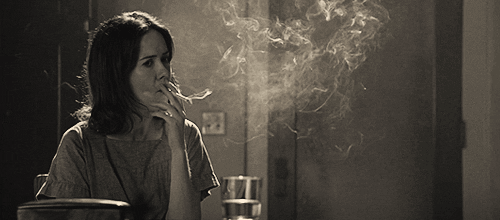I entered into the Punk: Chaos to Couture exhibit at the met with mild reservations but general excitement. The Met has a spectacular track record for good fashion exhibits, and this tribute to 1970's Anti-Establishment counter culture is well positioned in contrast to Impressionism, Fashion, and Moderism exhibit. The two fashion-centric exhibits sit next door to one another, representing two very distinct, different styles from different times with one strong common bond: the desire to reject the previous generation and innovate. The general excitement I had for the Met's Punk exhibit outweighed my reservations, given the museum's history with fashion exhibits, yet the reservation remained. I was unsure how an exhibit about a culturally subversive and anti-establishment fashion culture could possibly function well within, well, the establishment itself.
As I walked through the exhibit I stewed in my thoughts and feelings on the subject. I was uncomfortable, and I couldn't put my finger on why. The clothes were gorgeous, and the couture garments displayed exemplified the influence that Punk culture had on high fashion. From the unbeatable king of alternative beauty Alexander McQueen to the founding queen of punk fashion herself Vivienne Westwood, most of the works showed a true understanding and love for the Punk concept, the deconstructive and reconstructive nature of it all. (I say most purposefully; not all of the high-end designers represented truly understood the style they were attempting to imitate.) It wasn't until I came to the end of the exhibit, face to face with the gift shop that accompanies every exhibit that it really hit me.
What is so uncomfortable about this whole concept isn't that punk couture is being displayed as art (which it is), or that the punk subculture was being exhibited as art-historically relevant (as it should be). What made me uncomfortable was that this whole grand curated plan goes against everything Punk Rock stood for in a way seemed to sanitize and commercialize it. Now, commercializing Punk Rock isn't a new thing, and neither is sanitizing it, but it seemed crisper in this environment, clearer in its wrongness than it ever had to be before.
The exhibit begins with a display of clothing that is not, as the rest of the exhibit will be, high-fashion couture. The earliest examples presented are more representative of street clothes. Torn, punched, blended clothing and torn tee-shirts rest on on mannequins with synthetic Halloween wigs atop their plastic heads. It begins with a display of what the inside of Vivienne Westwood's original shop looked like, with torn tee-shirts in abundance. The display of Vivienne Westwood's shop was ingenious as a way to engage to viewer in understanding the grunge and gritty origins of punk fashion, through the first designer to decide this was something she wanted to do and became a name for it. The shop as historical context distracts, though, for the issue of torn see-shirts and studded leather jackets in tatters on mannequins. This casual street clothes fashion style was meant to be a rejection of the norm, to be a cheap way of self-expression through pure unadulterated anarchy. It was a movement for the youth with no money and no patience for the establishment. To see the fruits of this frustrated labor exemplified as something on display in the Metropolitan Museum of Art alongside Versace and Dolce & Gabanna was unsettling. To see the Met selling pristine tee-shirts with images and slogans on them in reference to the punk movement seemed, in that moment, almost criminal.
I imagine that a genuine punk ripe from 1970s disillusionment would find themselves disgusted by the whole idea of this exhibit, and that in itself made me uncomfortable. It felt to me not as an example of couture work inspired by a subculture and only couture work inspired by said subculture, but an appropriation of a subculture into the sterile environment of high art. It wanted to represent a historical fashion movement but only managed to present the movement as an untouchable high-art concept.
This is, by no means, a call to boycott the exhibit. Most of the exhibit is wonderful, and the couture works inspired by the movement are high fashion art at it's finest. I would simply advice to approach it with a bit of skepticism, and to not purchase a shirt from their store. That is, unless you intend on re-appropriating the wild commercialism of it it in your own way, in true Punk style. Then have at it, fuck shit up.

